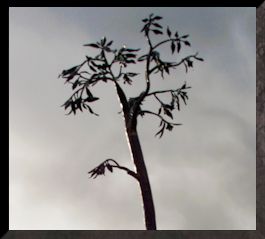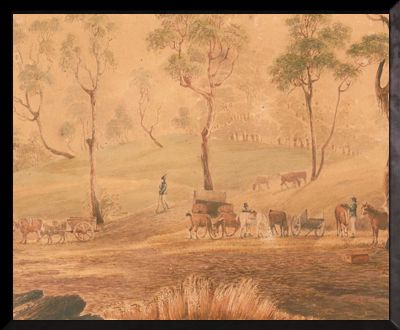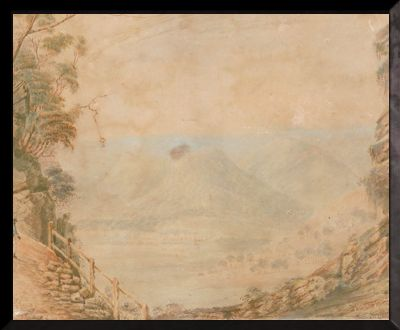|
|
|
|
||||||
|
|
BLAXLAND, LAWSON AND WENTWORTH CROSS THE BLUE MOUNTAINS On 31 May 1813 Gregory Blaxland, William Lawson and William Wentworth, with their guide, three convicts, horses and dogs, walked into the country of the Wiradjuri and Gundungurra, Therabulat and Wywandy, at what they called Mt Blaxland, above Hartley. This was not the first crossing, but it is, perhaps by virtue of publicity, known as the moment the Colony of NSW extended into the interior. On 31 May the new arrivals ventured down to the junction of the Rivers Lett and Cox and found an Aboriginal camp: the people had been feasting on ‘Honey suckle’ (Banksia) but had left as the explorers arrived. Blaxland noticed something else, writing in his journal:
As Lithgow historian Ray Christison has observed, the explorers had, without knowing, crossed from the coal-bearing sandstone of the western coalfield into the mineral rich granite belt of the Central Tablelands. This geology would shape the history of the Lithgow Valley. William Cox cut a road in 1814 and in 1815 Governor Lachlan Macquarie crossed the mountains with John William Lewin, and laid out Bathurst. The first land grant in Hartley was James Grant’s ‘Moyne’ in 1821. In 1824, after massacres of the Wiradjuri by English troops, Windradyne led the Wiradjuri into war on the Bathurst Plains. The English stayed though, and laid their words over the Aboriginal names. ‘Moyne’ had been Tunumberee, a place of hunting and ceremony. According to Mr Cullen of ‘Cullenbenbong’, who listed Aboriginal place names for The Lithgow Mercury in November 1931, River Lett was a rhyming replacement for Tarrapalatt (Therabulat); Tuiwon became the Vale of Clwydd and Gnallwarra became Brown’s Gap, after Thomas Brown, who used it to get from ‘Eskbank’ to the courthouse at Hartley. The Aboriginal word for Lithgow, named by the British after Auditor-General William Lithgow is not known.
According to historian Jim Smith, James Walker took up ‘Wallerowang’, the country of the Wywandy, in 1824 and employed Andrew Brown. Brown’s diaries show smallpox hit the area in the 1830s, but he is oddly silent about his relations with Aboriginal people. There are rumours that the water supply at his property ‘Cooerwull’ was poisoned, to kill them. On a more positive note, Walker’s cousin Thomas Archer came to know and respect Myles (‘King’ Miles or My-ill) in 1838, and a headstone for a man known as ‘Bobby’ was erected by Archibald James Walker on ‘Wallerowang’ in 1856. From 1838 until the 1880s Hartley Courthouse gave out around 50 blankets a year to Aboriginal people and in 1880 James Silcock, master potter, visited an Aboriginal camp and ‘had a long chat with them, as they can speak English tolerably well.’ The two best known elders were Gundungurra man William Davis ‘King Billy’ Lynch and ‘Queen’ Caroline, of Cooerwull. Smith says the record of Aboriginal people in Lithgow ends in 1895, but Myles’ descendants remain in Wallerawang, and Wiradjuri and Gundungurra people live throughout the towns of the area today. SOURCES Chris Cunningham, Blue Mountains Rediscovered, 1996 State Library of NSW,Crossing the Blue Mountains (Collection) Jim Smith, Wywandy and Therabulat: The Aborigines of the Upper Cox River and Their Association with Hartley and Lithgow, Lithgow District Historical Society, 1991 G. Blaxland, ’A Journal of a Tour of Discovery Across the Blue Mountains, New South Wales, in the Year 1813’, George Mackaness (ed), Fourteen Journeys Over The Blue Mountains of New South Wales 1813-1841, 1965 R. Christison, unpublished paper presented to Crossings Forum, Lithgow, 14 May 2011
|
|
||||||
|
|
|
|



